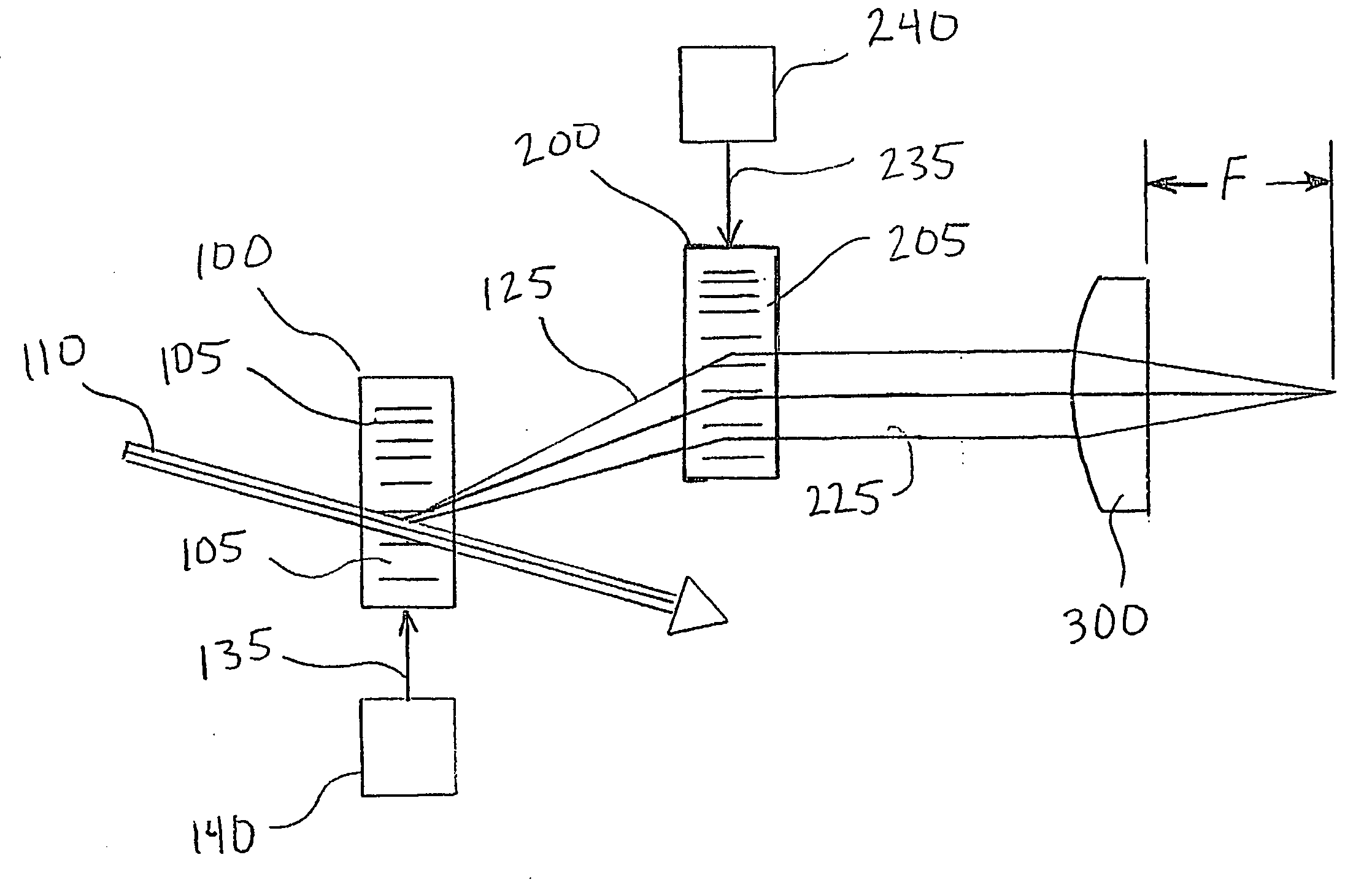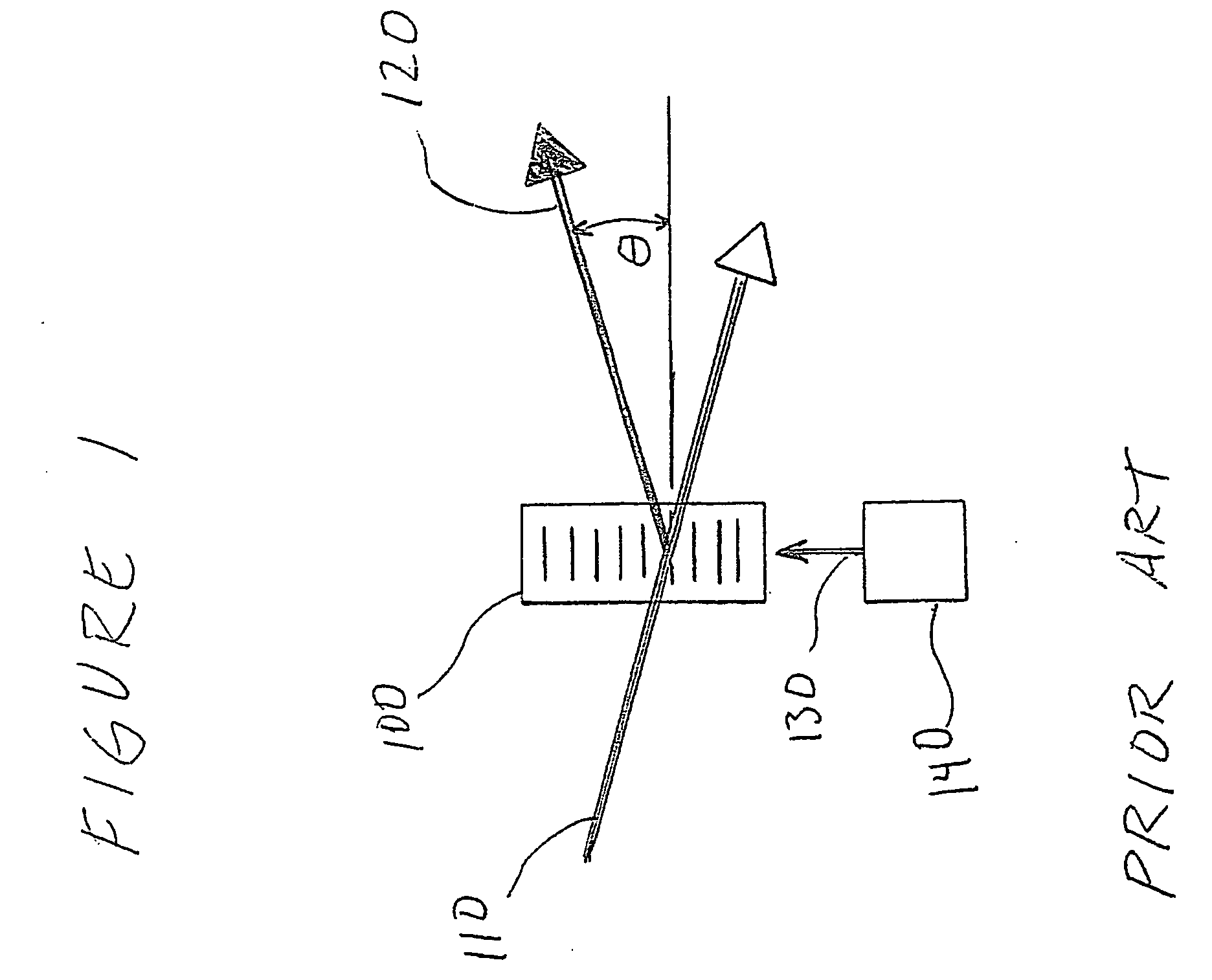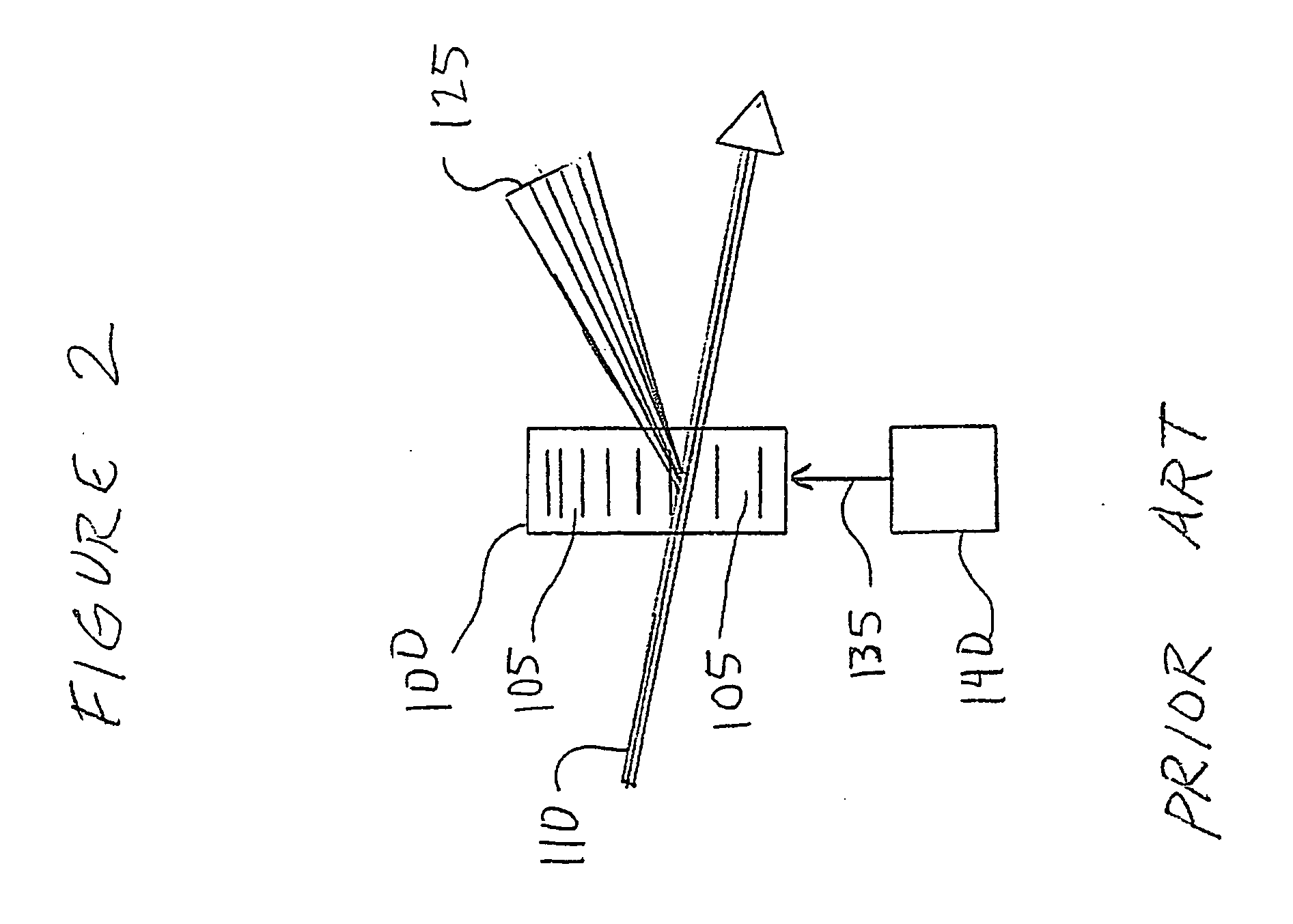High speed microscope with three-dimensional laser beam scanning
a laser beam scanning and high-speed microscope technology, applied in the direction of discharge tube/lamp details, instruments, optical elements, etc., can solve the problems of limiting the speed of such systems, raster scanning nor random access to multiple sites-of-interest at the required rate, and reducing resolution, reducing the time dependence of deflection angl
- Summary
- Abstract
- Description
- Claims
- Application Information
AI Technical Summary
Benefits of technology
Problems solved by technology
Method used
Image
Examples
Embodiment Construction
[0014] Preferred embodiments of the present invention comprise a scanning device to direct the focus of a light beam (such as a laser) to multiple predefined positions within a given volume. Preferred embodiments comprise an acousto-optically controlled light diffraction to independently change both collimation and direction of a laser beam. This inertia-free mechanism allows for very fast (microsecond range) three-dimensional positioning of the focus spot.
[0015] Embodiments of the present invention comprise a novel instrument for both structural and functional imaging studies of specimens such as living brain tissue. Certain embodiments use four AODs together with a commercial objective lens to deterministically and quickly (˜30 μs) position the focus spot in a microscopic 3D volume via a remote focusing strategy, while other embodiments may use fewer AODs with multiple acoustic waves in an individual AOD. Embodiments of the present invention utilize counter-propagating acoustic w...
PUM
 Login to View More
Login to View More Abstract
Description
Claims
Application Information
 Login to View More
Login to View More - R&D
- Intellectual Property
- Life Sciences
- Materials
- Tech Scout
- Unparalleled Data Quality
- Higher Quality Content
- 60% Fewer Hallucinations
Browse by: Latest US Patents, China's latest patents, Technical Efficacy Thesaurus, Application Domain, Technology Topic, Popular Technical Reports.
© 2025 PatSnap. All rights reserved.Legal|Privacy policy|Modern Slavery Act Transparency Statement|Sitemap|About US| Contact US: help@patsnap.com



